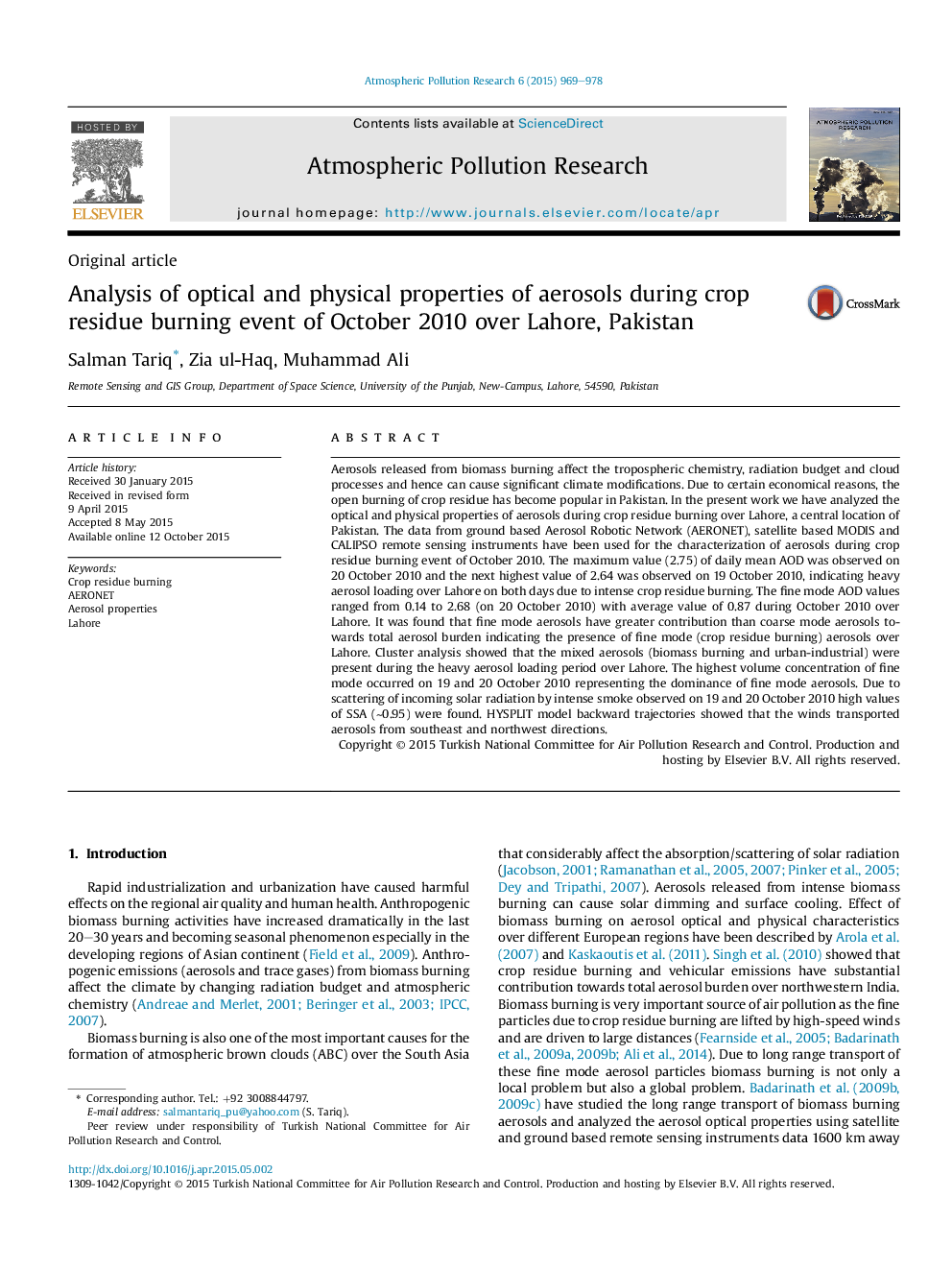| کد مقاله | کد نشریه | سال انتشار | مقاله انگلیسی | نسخه تمام متن |
|---|---|---|---|---|
| 4434649 | 1310521 | 2015 | 10 صفحه PDF | دانلود رایگان |
Aerosols released from biomass burning affect the tropospheric chemistry, radiation budget and cloud processes and hence can cause significant climate modifications. Due to certain economical reasons, the open burning of crop residue has become popular in Pakistan. In the present work we have analyzed the optical and physical properties of aerosols during crop residue burning over Lahore, a central location of Pakistan. The data from ground based Aerosol Robotic Network (AERONET), satellite based MODIS and CALIPSO remote sensing instruments have been used for the characterization of aerosols during crop residue burning event of October 2010. The maximum value (2.75) of daily mean AOD was observed on 20 October 2010 and the next highest value of 2.64 was observed on 19 October 2010, indicating heavy aerosol loading over Lahore on both days due to intense crop residue burning. The fine mode AOD values ranged from 0.14 to 2.68 (on 20 October 2010) with average value of 0.87 during October 2010 over Lahore. It was found that fine mode aerosols have greater contribution than coarse mode aerosols towards total aerosol burden indicating the presence of fine mode (crop residue burning) aerosols over Lahore. Cluster analysis showed that the mixed aerosols (biomass burning and urban-industrial) were present during the heavy aerosol loading period over Lahore. The highest volume concentration of fine mode occurred on 19 and 20 October 2010 representing the dominance of fine mode aerosols. Due to scattering of incoming solar radiation by intense smoke observed on 19 and 20 October 2010 high values of SSA (∼0.95) were found. HYSPLIT model backward trajectories showed that the winds transported aerosols from southeast and northwest directions.
Journal: Atmospheric Pollution Research - Volume 6, Issue 6, November 2015, Pages 969–978
